Wing submariners: the history of the use of aircraft from submarines
Samples, experiments, experiments
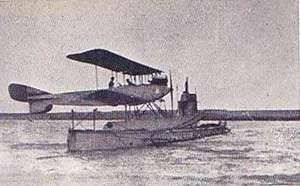
The desire to cross a submarine and an airplane, two types of relative new and new weaponsemerged at the dawn of their massive use - in the First World War. And the Germans were the first to attempt this outside the drawing boards. They have already become skilled in the practical use of “steel fish” and apparatus heavier than air, although they were not their discoveries. 6 January 1915 German U-12 carried the FF-29 seaplane on the deck of the Friedrichshafen seaplane to the maximum proximity to the coast of England, then the device was launched into the water, from which it took off. The plane successfully reached the mouth of the Thames, after which it returned to its immediate base in the occupied Zeebrugge. Piloted "Friedrichshafen" by Lieutenant Frederick von Arnold de la Perrier. It has been proven in practice that it is possible to conduct reconnaissance and in the meantime deliver “surprises” to the islanders, on whose lands no one from outsiders has entered, perhaps since Admiral Tourville’s time. News discussed and set aside - Admiral Hipper's battlecruisers, zeppelins, and a little later heavy bombers coped with this much more successfully.
But an exciting practice without tedious theory is also only part of the story. And this theory was developed in England. In the same 1915, from the opposite side of the English Channel base, the Englishman Pemberton-Bealing proposed the idea of transporting a seaplane in a special airtight hangar - if necessary, it could be removed from it, prepared for departure, stored and maintained. The practical application was supposed to be diverse: from reconnaissance of the enemy coast to use in the interests of fleet. The thought was found entertaining, but also dismissed - the Royal Navy lacked much less exotic, as it seemed then, concerns and problems. Limited to only one attempt. Submarine E-22, having taken two Sopvich-Schneider seaplane onto the deck, with the task of throwing them closer to the bases of the German zeppelins headed towards the enemy coast. However, the unrest damaged aircraft, and the operation was abandoned.
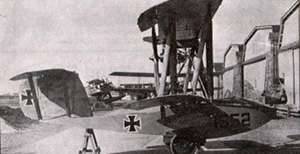
But the Germans, realizing that not expensive squadrons of dreadnoughts could bring them victory at sea, and yesterday's objects of jokes and ridicule - submarines - took the risk of trying to embody something in the metal already constructively. In 1916, Germany began construction of a series of U-142 submariners with a huge cruising range of 17500 miles. For operations in remote theaters as an auxiliary weapon, these submarines were planned to be equipped with a specially designed compact seaplane. A competition was announced, in which, by the way, designer Ernst Heinkel took part. The result of the work was the creation of the 1917-kilogram “Hansa Brandenburg W400” at the end of 20. The assembly and disassembly of the aircraft, which showed generally satisfactory flight parameters, took 3 – 5 minutes. During the trip, the scout was to be stored in a special cylindrical container on the deck. In addition to this sample, Stralsund V.19, similar in construction, was tested. The Compiegne Truce suspended these investigations. Of the entire series of submarine cruisers, only U-142 reached the stage of sea trials.
The ended World War I gave an unprecedented impetus to military affairs, technology and aviation in particular. We experimented with attempts to place different countries on the ship, an underwater ship, primarily the USA, England and France. For the Americans, it was a submarine S-1, on which practical experiments were conducted on the basis of the aircraft. In the end, considering that “His Majesty the aircraft carrier” would cope with air affairs much better, S-1 returned the traditional torpedo status. In 1927, the English underwater monitor M-2 was converted into an underwater “aircraft carrier”. Equipped with a 305-mm gun Mk 9 (which at one time were made as reserve for battleships of the “Formidable” type), this submarine was already exotic in itself. And now he, having lost his gun by the Washington Sea Agreement, is equipped with a seaplane hangar. The underwater aircraft-carrying monitor had developed technology for take-off and reception aboard its ward. There was a catapult to launch the aircraft, and boarding was carried out by a special crane. The weak point of the construction was the hangar - to facilitate it, they made it thin-walled, and to compensate for the external pressure of the water, it was crushed by compressed air. During ascent, air was vented through a special valve. Such operational difficulties ultimately led to disaster. January 27, the M-2 sank. One version: a tightly closed hatch between the hangar and the wheelhouse.
The French, who began at the end of 20-x years. the construction of the submarine cruiser “Surkuf” armed with 203-mm guns could not resist the temptation to equip the 4000-ton ship with a reconnaissance aircraft located in the stern hangar. Having managed to leave for England after the capitulation of France, "Surkuf" continued his military service already in the ranks of the Fighting France. During the transition to the Pacific Ocean, the cruiser died in circumstances that were not fully clarified.
Japanese way
However, there was another country that closely followed the development of advanced technologies and ideas in Europe and America and did not fear anything unusual, since it was in itself exotic. Imperial Japan, in her opinion, fell to the pittance while sharing the legacy of the losers and the victims. The largest military operation of the Japanese army was the storming of the German enclave of Qingdao and the accompanying dispersal of microscopic colonial administrations in the island's German colonies, and she received them in gratitude for their labors. Now the archipelagoes, though not large in size, but strategically important islands, were generously scattered across the wide expanses of the Pacific Ocean. And all this had to be protected, protected and, of course, thinking about the prospects. A good aid for the realization of these very prospects was the navy, which would be generally excellent if it were not so out of place organized by the Washington agreements. Much attention was paid in Japanese doctrines to submarines. In order to equip some of them with airplanes, we did not see anything strange - the vast expanses and distances made their adjustments. That which could not be viewed with binoculars or a periscope can be detected from a bird's eye view. Or even higher.
The Japanese approached the matter thoroughly, starting immediately with the development of an aircraft suitable for stationing in the specific conditions of a submarine. In 1923, German-made testing began. It was a Caspar-Heinkel U-1. Later, the Japanese designers managed to create a copy of the Yokosho 1-Go and successfully fly around it. It was a single biplane equipped with a 80-powerful Gnome engine. It took an average of 4 minutes to assemble and disassemble a seaplane, and about 16 to prepare for launch. 1-Go was placed in a cylindrical hangar of a submarine - mine layer I-21. She also had German "ancestors". The project of this submarine was developed on the basis of the U-125 submarine obtained from reparations from Germany and related technical documentation. In the course of practical tests carried out during 1927 – 1928, it turned out that it was possible to prepare the plane for the flight not for 15, but for unacceptable 40 minutes. 1-Go had a low speed and could hold in the air for no more than two hours. And the I-21 itself was not well adapted as an aircraft carrier.
The next step of the Japanese designers was the acquisition of the Parnall Peto seaplane from the UK, which, by the way, was based on the former M-2 monitor. It was a two-seater and equipped with a novelty of the time - a compact VHF radio station. On its basis, the somewhat diminished “Yokosho” 2-Go was developed, having a licensed copy of the English 130-strong “Mongoose” again. The novelty was tested on a dedicated I-21 for this purpose. 2-Go, tested from 1929 to 1931, initially showed more satisfactory results, but the military, guided by the “no limit to perfection” rule, asked to develop the project. The fruit of the evolution of the English "Peto" was the Yokosho 2-Go Kai, which already had a Japanese-made 160-strong radial engine. The car was tested on submarines I-21 and I-51, after which under the symbol E6Y1 model 1 was adopted.
While the "vigilant eyes" of submarines were brought in, dense work was being done on the creation of underwater carriers for aircraft of special construction. The first submarine, originally designed to equip a seaplane, was the I-5. Its construction began in October of 1929 and ended successfully in 1931. The project was developed on the basis of a submarine cruiser, the boat had an underwater displacement in 2921 tons, two diesel engines with a capacity of 6 thousand liters. s., allowing 24 to go thous. miles, two electric motors (2,6 thous. hp). Besides the torpedo (six bow and two fodder 533-mm TA), they are also armed with two 140-mm guns. From the bulky cylindrical hangar, it was decided to abandon in favor of two, as much as possible recessed into the deck. The aircraft was kept peculiar: in the right hangar the fuselage, in the left - wings and floats. A special crane removed the component parts to the deck, where it was directly assembled. Initially, the takeoff was carried out directly from the water, but when the Japanese managed to bring the pneumatic catapult to an acceptable state, it was installed behind the cabin, thereby making it easier to start. The next aircraft carrying boat, the I-6, built in Kobe in 1935, has already made some improvements and modifications. More powerful diesel engines (8 ths. Hp) and electric motors (2,6 ths. Hp. Ps.) Were installed, reserves of fresh water and provisions were increased - this greatly increased autonomy (90 days against 60 on I-5). Artillery weapons were reduced to one 127-mm gun. Improved equipment related to the basing of the aircraft. Both containers were equipped with hydraulic lifts that lifted them from a semi-submerged state, which excluded their flooding. This improved design allowed the aircraft to be assembled under more varied weather conditions, and not only in relatively quiet weather, as was the case at I-5.
The following submarine cruisers continued to improve. These were I-7 and I-8. They were intended for reconnaissance and combat against the enemy practically throughout the entire Pacific Ocean and could play the role of flagship ships of submarine flotilla. Complaints that due to the strong vibration caused by the engines, the previous I-6 could not conduct aimed shooting, were taken into account: new submarines received four-stroke diesel engines, to reduce noise installed on rubber-metal shock absorbers. The 127 mm caliber was considered weak, and therefore it was decided to return to the “classic” 140 mm. For new boats and new tasks required the corresponding aircraft. The company Watanabe has created such a machine, which has received the designation E9W1 (type 96), or in the ally code-named system Slim. It was equipped with an 340-strong engine, which allowed it to pick up speed up to 232 km / h. As a defensive weapon was installed 7,7-mm machine gun. The crew consisted of two people.
I-7 and I-8 have already happened to take part in the Sino-Japanese War, carrying out a coastal blockade. The experience gained at the same time allowed to come to the conclusion that the onboard aircraft greatly expands the capabilities of the submarine - especially conducting reconnaissance at sea, enemy bases and the coast. The main complaint of naval officers was the substantial laboriousness and time spent on assembling and disassembling the aircraft, which was also stored in two hangars. This significant flaw was corrected in the next, the most numerous, series of boats equipped with airplanes - type B1. Submarines were built on the 3-th and 4-th fleet replacement programs 1937 and 1939. They were distinguished from their predecessors by smooth hull lines and a number of design innovations. First of all, the aircraft equipment underwent significant changes. Completely abandoned the cumbersome and inconvenient system of two hangars. Now the hangar, located in front of the cabin, was one with it. There, on the nose, moved the launch catapult.
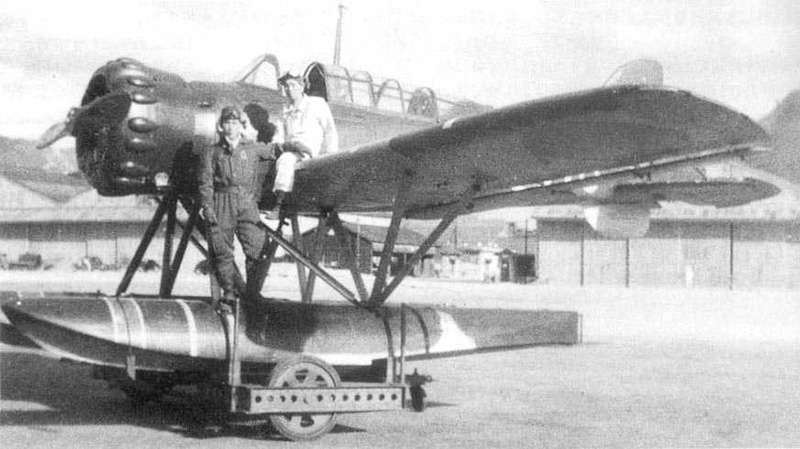
Most importantly, a completely new aircraft was developed for the new series of boats. Its development was carried out by the designer Mitsuo Yamada from the First Marine Technical Arsenal, located in Yokosuka (therefore, the aircraft received the letter “Y” in its designation). The prototype was quickly assembled and submitted for testing. At first, he and his direct competitor, made already experienced in the creation of boat hydroplanes firm "Watanabe", went nose to nose in various experiments and tests, which turned out to be very meticulous. In the end, at the stage of testing the convenience and speed of assembly, disassembly and placement in the hangar, Yamada’s creation was ahead. The aircraft was commissioned under the symbol E14Y1, its production was assigned to the losing company, Watanabe, which had significant production facilities.
E14Y1 was the only one of its kind really fought a seaplane based on submarines. It was a double float monoplane, armed with an 7,7-mm folding pivot machine gun to protect the rear hemisphere. Provided 60 suspension kg bombs. There was no special reconnaissance equipment, except the pilot's eyes, on the plane. The release was carried out before the beginning of 1943, the 125 aircraft came out of the workshops. The Americans gave the car the code name "Glen". On submarines of the B1 type, the E14Y1 was located with folded wings in the hangar. The submarines themselves had an underwater displacement of 3654 tons, two diesel engines with a capacity of 12 thousand liters. with. allowed to reach the speed of the 23 node. Electric motors had less power - 2 thousand l. with., but due to the optimization of the hull lines it was possible to keep the underwater speed at the level of previous projects - 8 nodes The armament consisted of six nose torpedo tubes, one 140-mm gun, one 25-mm anti-aircraft gun and, in fact, an aircraft. 1938 to 1941 20 submarines were laid: I-15, I-17, I-19, I-21, I-23, I-25, I-39. Of all the boats stood out I-17, on which the hangar and the catapult were placed behind the cabin, and the instrument, respectively, in front. According to the so-called urgent military program 1941, more 14 boats were laid on the advanced projects B2 and B3. They differed from the first series by hull lines, less powerful, but more economical two-stroke diesel engines. Some of them entered service without an onboard aircraft due to a shortage of trained pilots, in some the hangar was replaced in favor of the second 140-mm gun. Of the 14 boats, the 9 came into operation. In the spring of 1943, orders for the remaining boats and submarines of the B4 type, which was a further evolution of the project, were canceled.
Combat work
Airborne submarines took an active part in the war in the Pacific Ocean already in its first battle - the attack on Pearl Harbor. Most of the 11 aircraft-equipped submarines that were in the ranks of the imperial fleet by December 1941 were pulled in advance to the Pearl Harbor. December 17 began direct combat career onboard seaplanes. The machine, launched with I-7, passed over the American base, gathering valuable information about the damage and damage. The second successful exploration was made on January 1 1942 "Glen" with I-9. Both times the flights took place without countering the enemy air defense. Then there was a long break, and only in the fall of 1943, I-36 got to Oahu to get information about what was happening in the harbor. However, the Americans were on their guard, and the boat could not come close to an acceptable distance. Finally, the submarine commander, in which the reserve of autonomy came to an end, took a hard but forced decision. 19 October 1943 I-36 released the aircraft at a distance 300 miles from the target - outside the radius E14Y1. For a volunteer pilot, it was a one-way ticket. Having flown over Pearl Harbor and reported on the radio about what he had seen, the pilot never went on the air. The last time the reconnaissance of the main American base managed to be carried out on 19 on November 1943 by Glen with I-19.
Exploration in Hawaii was by no means the only task of aircraft-carrying submarines. In February-April, 1942 made a big hike with visits to Allied strategic points, produced I-25 under the command of Meiji Tagami. The onboard aircraft made reconnaissance flights over Sydney, Melbourne, Hobart, Wellington, Auckland and other harbors. I-10 and I-30 conducted reconnaissance operations as part of a large march of the Japanese fleet to the Indian Ocean. In addition to hunting for ships and ships of the Allies, such aircraft as Aden, Djibouti, Dar es Salaam and Diego Suarez were inspected by aircraft from these boats. Not only tropical waters have become a place of use of "underwater" air reconnaissance - it was actively produced in the North, for example, in the region of the Aleutian Islands. Glen with I-25 inspected Kodiak Island. We also had aircraft carrying submarines in Europe - transport links between Germany and Japan were carried out with the help of blockade vessels and submarines. One of the I-8 submarines arrived on September 8 in the German-occupied Brest.
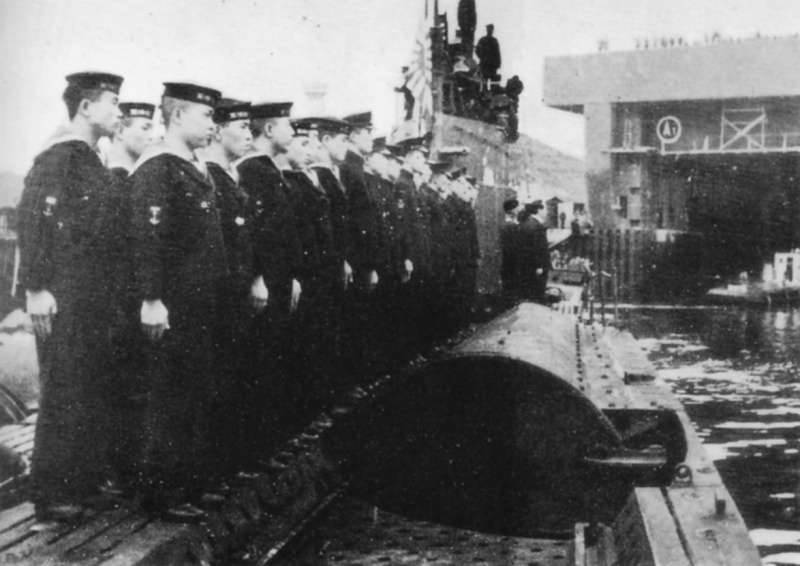
The actions taken by the Japanese command as part of the organization of submarines of air strikes on the coast of the United States stand apart. 18 conducted on April 1942 of the year, a bold raid of American bomber B-25 under the command of Lieutenant Colonel James Dulitt alarmed the Japanese command and became one of the jolts that prompted the operation against Midway. Among other things, there was a good motivation to take revenge. Sending aircraft carriers to the shores of the United States was more than risky, and then the idea came to use aircraft from submarines. For such a responsible mission I-25 was chosen, the crew of which had a lot of experience, and the pilot of her plane, midshipman Nubudo Fujita, had more than 4 thousand flight hours. In August, the pilot was summoned to 1942 fleet headquarters. The presence of a member of the imperial family of Prince Takamatsu testified to the importance of the moment. Here, Fujita learned that the purpose of his next assignment would be to bombard the forest area of the Oregon headquarters, whose map was found on the Wake Island seized by the Japanese.
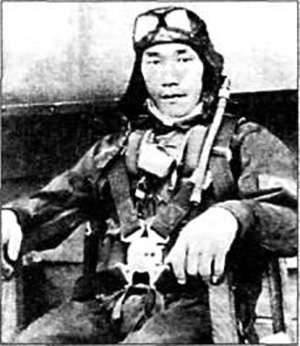
15 August 1942 I-25 reached the shores of Japan under the command of the same captain 3 rank Tagami. 30 August boat approached the coast of Oregon. Perform the mission immediately did not seem possible - the weather did not spoil. It was only early in the morning of September on 8, equipped with two special incendiary 76 kg bombs from Fujita, made a departure from I-11 standing in 25 km from the coast. Climbing to the height of 2500 meters and focusing on the light of the lighthouse, the pilot went deep into the coast. The bombs were dropped in 80 km from the coastline, after which the aircraft lay back. Along the way, he was most likely seen from two merchant ships, since shortly after taking the plane on board, there was an attack by a patrol Hudson who dropped three bombs on the submarine, which she dodged.
The next bombardment was made only on September 29 - this time the flight was carried out after sunrise. The goal was also served dense forests in the Cape Blanco area. Having gone deep into the enemy’s territory by about 15 km, Fujita got rid of the cargo and lay back. In the dark, he did not immediately find his boat and flew to it literally on the last drops of fuel. Ironically, an oily trail of leaked fuel helped her find I-25. The results of this bold operation were modest - the expected panic among the local population did not happen. The American command on time to stop the leakage of information. Michman Fujita entered history as the only pilot of the Axis countries to bombard the continental United States.
Carriers "Mountain Fog"
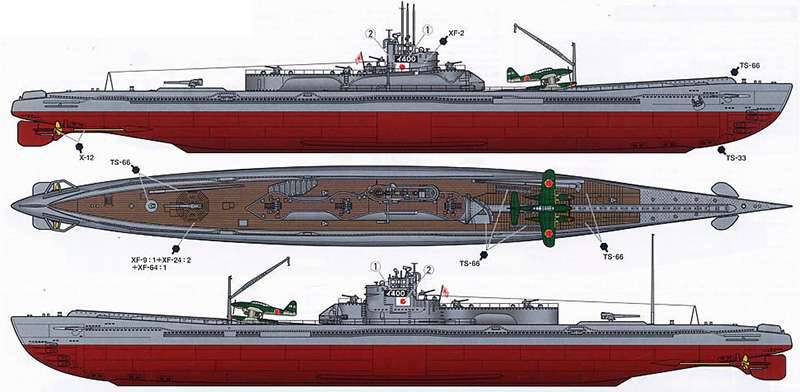
The idea of using submarine-based aircraft, not only as scouts, began to form in Japan before the attack on Pearl Harbor. At 1941, the Maritime General Headquarters made demands on a submarine capable of carrying at least two bomber on board and attacking the US coast. By the beginning of 1942, initial thoughts and ideas took shape in the so-called “Construction project S 50”. The original version provided for a displacement of 4550 tons and the required two aircraft, but was soon revised upwards. The final surface displacement was 5223 tons, scuba - 6550 tons, the hangar was already designed for three aircraft. In February, 1942, the commander of the United Fleet, Admiral Yamamoto, under the Extraordinary Program 1942 of the year, signed a plan to build a special-purpose carrier fleet Sen Toku (abbreviated from Japanese Sensuican Toku - special purpose boat). It was planned to build a 18 such unique ships. Yamamoto, who was one of the main conductors of the concept of attacking submarine-based bombers, set the main goal for them: the locks of the Panama Canal, which was of strategic importance to the United States.
Over the project of huge submarines worked engineers of the Main Marine Arsenal in Yokosuka and the breech shipyard in Kura. Throughout 1942, the idea was polished and refined, and in January 1943, the leading I-400 was laid in Kure. A year later, the submarine was launched, and in December 1944-th entered service. The following ships, I-401 and I-402, were laid at Sasebo in April and October, respectively. Construction proceeded more intensively, and the boats were launched in March and September 1944. I-401 entered service on 1945 in January, and I-402, due to changed conditions caused by a shortage of fuel, was rebuilt into an underwater tanker and was only ready for the very end of the war. Founded in November 1943 in Kure, I-404 was lowered 1944 in July, but at 90% readiness, construction was discontinued. 28 July 1945, right in the water area of the plant, it was sunk by deck aircraft.
Submarines of type I-400 at the time of their entry into service had no analogues in the world. Their displacement was 5223 t full surface and 6500 t full underwater, length 122 meter, width 12 m, draft 7 m. Depth dive 100 meters. The navigation range was huge and was 70 thousand miles. Submarines equipped with snorkels. They were armed with eight nose torpedo 533-mm vehicles, one 140-mm gun and ten 25-mm anti-aircraft guns. The hangar was 37,5 long and 3,5 wide, and had to accommodate three bombers. I-400 were the largest submarines of the Second World War and in size kept the palm until the beginning of the atomic era.
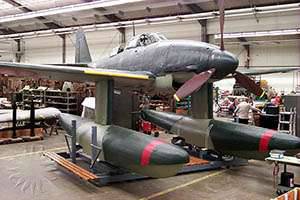
A few words should be said about the aircraft. For the unique submarine, not less unique Seyran bomber was created, which can be translated as mountain fog. For the development of the machine took the company "Aichi" under the leadership of the designer Norio Ozaki. The DixNUMXY4 “Suissey” (“Judy”) deck dive bombardor was adopted as the basis, the output was a completely successful and the only seaplane in the world that was a bomber. The wooden model was made already in 1, and the first flight copy took to the air in 1942. Serial production began in October of 1943 and only until the summer of 1944 was built around the 1945 "Seyran". The aircraft developed speed 20 km / h. and had a range of about 474 km. He could have been armed with either a 1200 kg airplane or a 850 kg bomb under the fuselage.
In the fall of 1944, the formation of a special squadron, number 631, began, and the Seyrans were armed. The detachment was part of the 1 fleet of submarines, which included both I-13 and I-14 veterans, as well as the latest I-400 and I-401. The aircrew combat training took place at Fukuyama airbase, in the vicinity of which full-size mock-ups of the Panama Canal locks were built. The trainings were hampered by capricious engines and lack of jet fuel. To solve the problem of fuel, I-401 was sent to Manchuria, disguised as an escort ship. The situation at sea was such that it was already unsafe to transport by an ordinary tanker. The boat still exploded on the American mine and was forced to return. Then I went to Dairen I-400 and returned safely with a load of fuel.
In summer, Japan’s position deteriorated to such an extent that it was decided to abandon the task of striking the Panama Canal in favor of a more urgent operation against the US naval base on the Uliti Atoll. The plan of operation "Hikari" envisaged the actions of the "Seyrans" as a kamikaze. I-13 and I-14 were supposed to deliver C6N1 reconnaissance aircraft to Truk, with the help of whom it was planned to carry out intelligence for Ulit for the subsequent strike. I-13 was unable to complete the task - it was sunk near Yokosuki. 26 July 1945 left the newest I-400 and I-401 left in Ominato base. 6 August on board I-401, which was the flagship, a fire broke out, and she lost the opportunity to dive for a while. The timing of the operation violated. Due to problems with communication, I-400 did not receive a new introductory with changing the rendezvous point. Boats missed, fearing to go on the air, so as not to violate the radio silence. A strike that was scheduled for August 17 was moved to the 25. And on August 15 Japan agreed to surrender. 16 August submarines received an order to cancel the operation and the destruction of "Seyran". I-400 just dropped the planes overboard, I-401 catapulted them with wings folded. The submarines raised black flags symbolizing surrender (the whites were not used, so that there was no confusion with the Japanese national flag) and headed home. On August 31, both boats surrendered to the Americans, the commander of the compound captain 1 of the rank Arizumi shot himself to death. In September, 1945, both boats were transferred to the American base in Guam, where they were subjected to scrutiny. 31 May 1946 I-400 and I-401 were flooded west of Oahu. I-402, along with other 23 submarines, was flooded by Americans off Goto Island as part of Operation Dead End. In the second half of the 2000's. A special American expedition discovered I-402 at a depth of 182 meters north-west of Nagasaki.
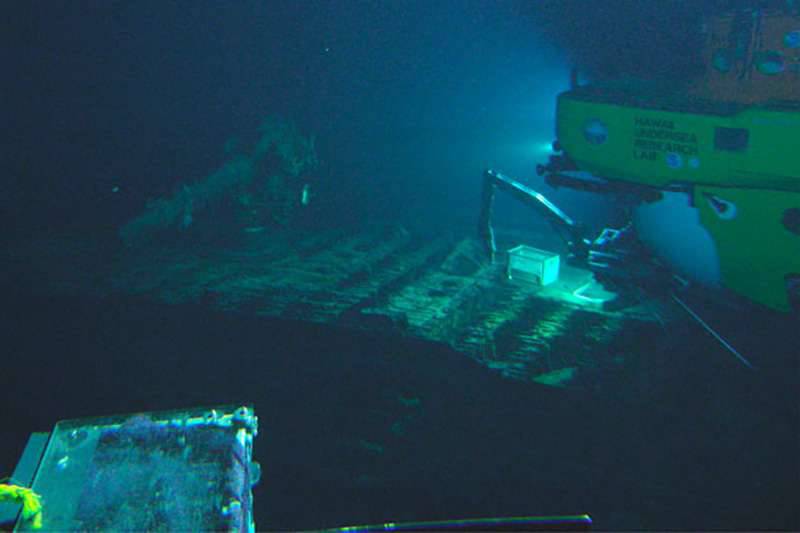
Japanese submarines equipped with onboard aircraft were a unique kind of ships used only by the Imperial fleet. In other countries, things have not progressed beyond experiments and individual submarines like the "Surcouf". It is the Japanese pilot Fujita who has the honor of penetrating the airspace and delivering a symbolic but still bombing attack on the US mainland. Versions of the allegedly taking place in the second half of 1943 during the flight of the German six-engine Ju-390, which departed from a base near Bordeaux, reached the shores of North America and made aerial photography of Long Island, and so far remain versions.
Information